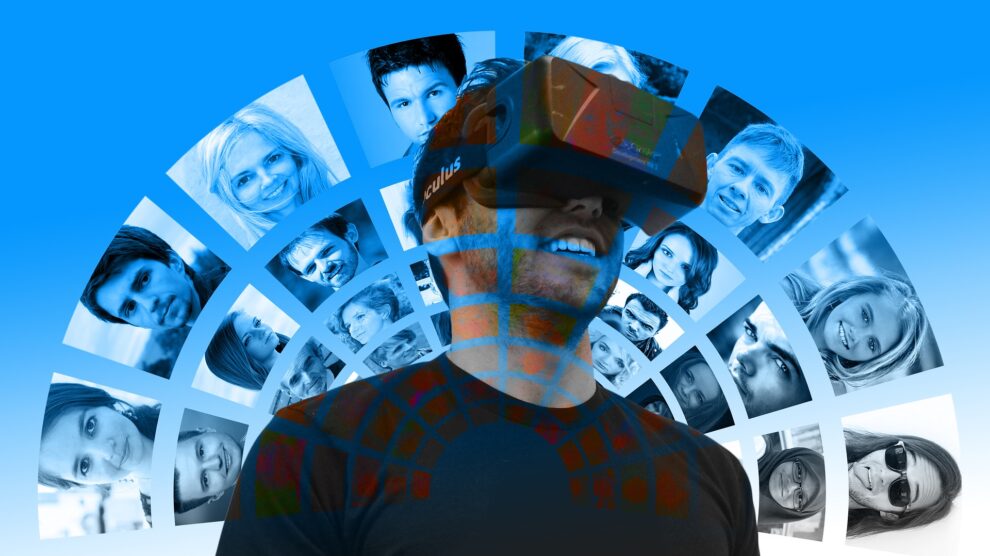When someone mentions virtual reality, the gaming industry is usually what comes to mind. However, in 2018, virtual reality started to appeal to industries beyond gaming and entertainment – for example those in manufacturing, healthcare, and education. Many organizations started to pay attention to the compelling applications that virtual reality has to offer and began to implement virtual reality solutions to help them work more productively and efficiently.
In 2019, virtual reality will continue to expand beyond entertainment, establishing its place in workplaces around the world. Here’s a closer look at the impact virtual reality will have in the workplace in 2019.
1. Meetings
Virtual reality provides a way for people to come together regardless of location. However, unlike video conferencing, virtual reality users feel as though they are meeting face-to-face and in the same physical space.
This intimate connection could lead to more effective collaboration in the workplace, especially among remote teams. As more and more organizations embrace the concept of remote work in 2019, virtual reality could help make team meetings or brainstorms more collaborative, and ultimately, more productive.
According to a Dell Future Workforce study, 67% of millennials believe it’s important to use virtual reality in meetings and product development. The modern workplace is changing, and employees are demanding more flexibility with their working hours, including more options to work remotely. With virtual reality, businesses will be able to bring remote employees or distributed teams closer together through immersive or mixed-reality experiences, possibly eliminating the need for meeting rooms and large offices in the near future.
2. Hiring
Recruitment mistakes can result in wasted time and a decrease in productivity, so it’s vital that HR departments hire employees that are truly a good fit for their organizations. Acquiring top talent is a key challenge for any business and is a key area of the workplace where virtual reality can provide a lot of value.
Using virtual reality applications during the interview process, HR managers can offer candidates a personalized way to experience the day-to-day responsibilities of a position. Not only are these simulations a great way for candidates to understand what the job entails, but they’re also the perfect channel for hiring managers to propose specific scenarios or challenges, and test candidates on how they would respond or solve the problem.
By using virtual reality simulations, both sides of the table can get a better sense of what it would be like to work together and make better decisions.
3. Training
Statistics show that the demand for augmented and virtual reality in corporate training is skyrocketing and projected to reach $2.8 billion by 2023.
From NASA to Walmart, companies around the world are incorporating virtual reality training sessions to reduce risks and minimize costs. With virtual reality, businesses can offer new hires fully-immersive, real-life scenarios where they can learn about the business and put their skills to the test without making any real mistakes. This is game-changing for professions that involve high-risk situations, such as positions in healthcare, construction, or the armed forces. However, it’s not just the highly technical or risky jobs for which virtual reality can be of use. For instance, Walmart uses virtual reality simulations to help train employees for Black Friday and the holiday crowds.
Virtual reality offers businesses an exciting way to develop engaging and educational experiences for new employees. What’s more, studies show that when users are continually adapting and physically engaged in their environments, as they are in virtual reality, learning retention can be boosted up to 33%. The immersive environment is often more memorable and can be easily altered to suit a wide range of learning styles.
4. Testing
Digital prototyping is commonly used in the workplace to develop full-scale replicas of new concepts or product ideas. But with virtual reality, these prototypes can be experienced, instead of just viewed. Imagine if team members could step into a virtual world and view their concepts in full-scale, walking around them and examining them in detail. Products could also be put to the test in a virtual environment, with multiple team members present to evaluate the results and collaborate on improvements.
Testing new ideas in virtual reality would allow businesses to spend fewer resources on prototyping and testing, and ultimately, develop better products faster and more efficiently.
In Conclusion
In 2019, virtual reality is predicted to become much more accessible across a wide range of industries, offering businesses new ways to digitize their workplace. While there are still just a handful of highly-useful applications for virtual reality in the workplace, exciting new developments are already underway. In 2019, virtual reality will be game-changing for collaboration in the workplace, allowing teams to work together more intimately and effectively regardless of location.





